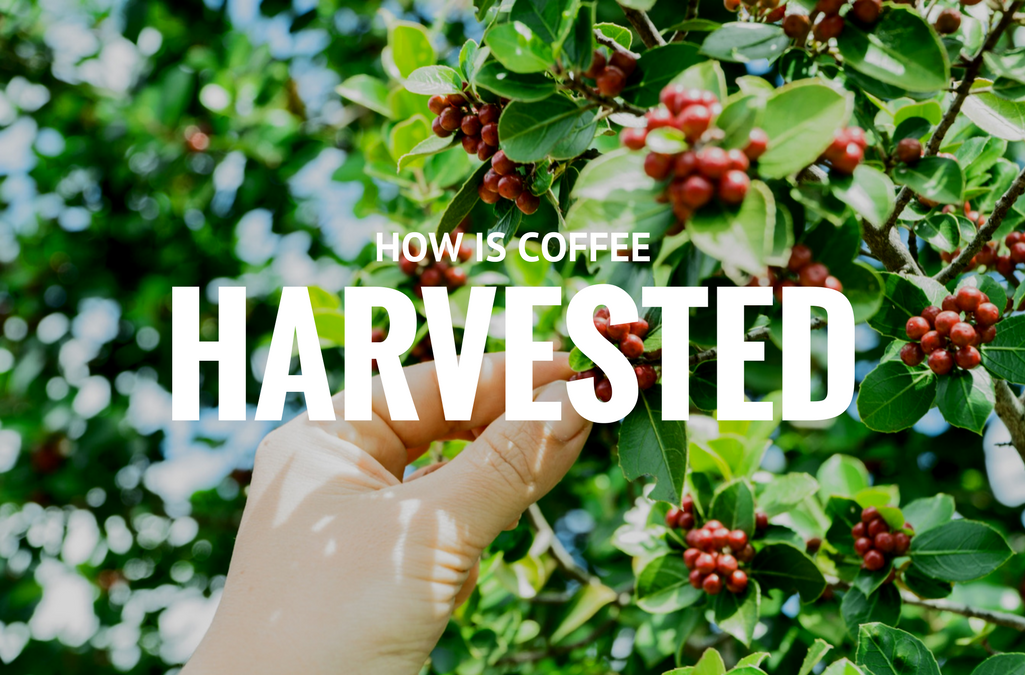When reading about specialty coffee, you will often read that beans are graded. But what does this all mean? And who decided on the rules?
The SCA Coffee Beans Classification is a standardised method to compare coffee beans. It judges the relationship between the amount of defective coffee beans and the overall cup quality.
Coffee is graded by sorting the hulled green beans over screens with different sized holes. The beans remaining in each screen are then weighed, and the percentage of the total is recorded. Following this the coffee is roasted and cupped in order to evaluate the characteristics.
The coffee screening method was developed from a theory that coffees grown at high altitudes are more dense and larger, while also generally holding the best flavour profile. From this it can be deducted that there is a correlation between bean size, density and quality. While there are of course exceptions to this theory, the main objective is to produce beans of uniform size, so that an even roast can be achieved.
Grade 1: Specialty Grade Coffee Beans.
This is the highest grade of beans, and to be classified as Grade 1 Coffee, the beans need to have no primary defects and 0-3 full defects, with a maximum of 5% above and below the specified screen size. When cupping, these beans need to have a distinct attribute in one of the ares of taste, acidity, body or aroma, and be free of cup faults and taints. These beans also need to have zero of what is referred to as “Quakers” which are unripe or poorly roasted beans.
Grade 2: Premium Grade Coffee Beans
The second highest grade, and the one you most often would be drinking, these beans are the same as Grade 1 coffee beans, but are allowed a maximum of 3 Quakers and 0-8 defects.
Grade 3: Exchange Grade Coffee Beans
These beans will have 50% above screen 15 and 5% below it, with a maximum of 5 quakers, free from faults, but between 9-23 full defects are permissible. Supermarket brands are using these beans.
Grade 4: Standard Grade Coffee Beans
These will have 24 to 86 full defects per 300g. These are getting into dodgy territory.
Grade 5: Off Grade Coffee Beans
You really don’t want these beans, they have more than 86 full defects per 300g.

Want to learn more?
Check out our ULTIMATE Home Barista Course!
With this course, you are guaranteed to improve your home barista skills, becoming an expert in coffee theory and practice, and leaving you with the confidence to take on the coffee industry.
What you’ll receive
- A six-lesson series of in-depth information
- Video tutorials
- Cheats sheets and small quizzes to help with retention
- On-going Support
- Access to an exclusive Facebook group
- Priority discounts and bonuses as we release more and more special materials
Find out more info here!




11 comments
Rob
I have recently developed a fascination for everything coffee. And have ben engrossed in learning re from your website – I have a coue of silly basic questions – I have just red about the grading system – I presume this is done on green beans, but is it done at the roasters or prior to packing on the farm ? I read wih great interest the stort on PNG coffee – it states a quality bean from Okapa of “86” – what does this rating mean compared to the grading system you describe? Many thanks and a great weblog. Just off for my afternoon tea…….only kidding
I have recently developed a fascination for everything coffee. And have ben engrossed in learning re from your website – I have a coue of silly basic questions – I have just red about the grading system – I presume this is done on green beans, but is it done at the roasters or prior to packing on the farm ? I read wih great interest the stort on PNG coffee – it states a quality bean from Okapa of “86” – what does this rating mean compared to the grading system you describe? Many thanks and a great weblog. Just off for my afternoon tea…….only kidding
Mathias
This is a great worm am so greatful however you can give more light on these terms fault ’ and defect
This is a great worm am so greatful however you can give more light on these terms fault ’ and defect
Ángela
I’m a little bit confused regarding to the Grade 3 coffee or “Exchange grade coffee beans” What is the difference between “faults” and “defects”? The description for this grade says that coffee should be free from faults but also might have 9-23 “defects”.
Thanks in advance :)
I’m a little bit confused regarding to the Grade 3 coffee or “Exchange grade coffee beans” What is the difference between “faults” and “defects”? The description for this grade says that coffee should be free from faults but also might have 9-23 “defects”.
Thanks in advance :)
Facebook Marketing
I am really inspired together with your writing talents and also with the format on your weblog. Is that this a paid topic or did you customize it yourself? Either way keep up the excellent quality writing, it is rare to peer a great weblog like this one these days.
I am really inspired together with your writing talents and also with the format on your weblog. Is that this a paid topic or did you customize it yourself? Either way keep up the excellent quality writing, it is rare to peer a great weblog like this one these days.
Ryadan Jeavons
Hi Bill,
Not sure exactly what you’re asking. Specialty coffee can be referred to as all of those depending on the person.
The term itself has been around since 1974 but only became widely used in the public sense in the last 5-10 years.
If you’re asking about the original term I think it was just ‘Specialty Coffee’.
Hi Bill,
Not sure exactly what you’re asking. Specialty coffee can be referred to as all of those depending on the person.
The term itself has been around since 1974 but only became widely used in the public sense in the last 5-10 years.
If you’re asking about the original term I think it was just ‘Specialty Coffee’.
Bill Audette
Hi.
With regard to “Specialty” grade coffee, is it formally referred to as “Specialty”, “Specialty Grade”,
“Specialty Grade 1” or “Specialty Grade-1”?
Thank you
Hi.
With regard to “Specialty” grade coffee, is it formally referred to as “Specialty”, “Specialty Grade”,
“Specialty Grade 1” or “Specialty Grade-1”?
Thank you
Ryadan Jeavons
Hi Rajeev!
That’s not really a question I can answer as it’s too broad and is specific to each farm. As a very broad percentage 5-10% but again you’d have to ask each farm.
Cheers,
ryd
Hi Rajeev!
That’s not really a question I can answer as it’s too broad and is specific to each farm. As a very broad percentage 5-10% but again you’d have to ask each farm.
Cheers,
ryd
rajeev k ganapathy
What percentage of PB grades are normally seen while grading coffee ?
What percentage of PB grades are normally seen while grading coffee ?
How are Coffee Beans Graded?
[…] These holes allow certain sizes of bean through and keep others based on their size. Higher quality batches of beans will have a more uniform size, allowing a more even roast, with the best coffee grades having a maximum of 5% above and 5% below the main screen size, which is determined by weighing the beans in each screen. […]
[…] These holes allow certain sizes of bean through and keep others based on their size. Higher quality batches of beans will have a more uniform size, allowing a more even roast, with the best coffee grades having a maximum of 5% above and 5% below the main screen size, which is determined by weighing the beans in each screen. […]
syawal
Sorry, I just wanna ask some question, for my paper the topic is about green coffee beans grade.
from Grade 1, is about 0-3 defect with a maximum 5% from 300gram or in Grade 4 with 24-86 full defect from 300grams, the number you tell is the pcs (my question example: 24pcs) of the beans or the percentage from the sample of 300grams?
Thank you
Sorry, I just wanna ask some question, for my paper the topic is about green coffee beans grade.
from Grade 1, is about 0-3 defect with a maximum 5% from 300gram or in Grade 4 with 24-86 full defect from 300grams, the number you tell is the pcs (my question example: 24pcs) of the beans or the percentage from the sample of 300grams?
Thank you
Leslie
Hi Ryadan,
Love the article, i was very helpful.
We are new to the coffee industry but are working on releasing a limited batch of coffee every year from the best beans in Zimbabwe.Where would we find someone who can review and rate our coffee for us.
Many thanks
Leslie
Hi Ryadan,
Love the article, i was very helpful.
We are new to the coffee industry but are working on releasing a limited batch of coffee every year from the best beans in Zimbabwe.Where would we find someone who can review and rate our coffee for us.
Many thanks
Leslie